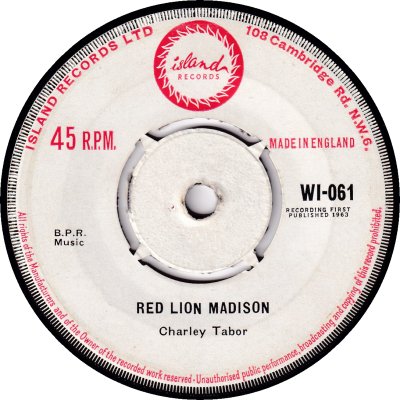

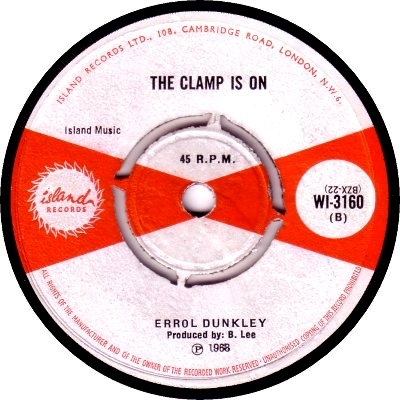
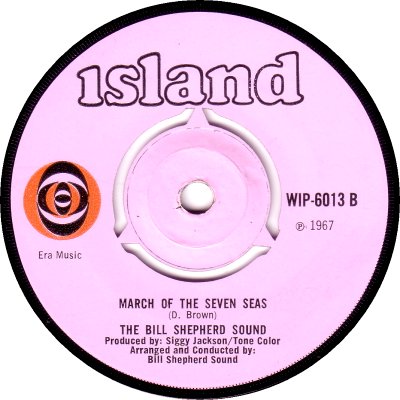

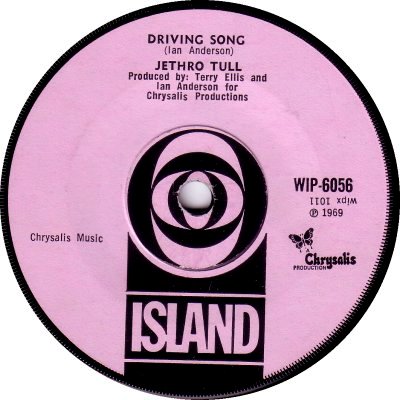

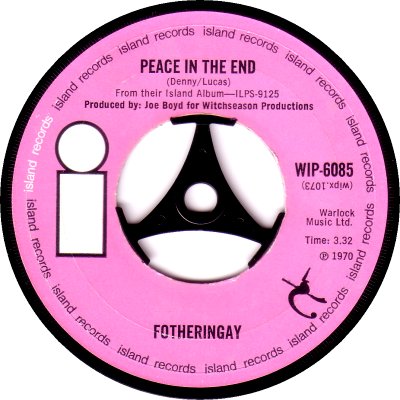
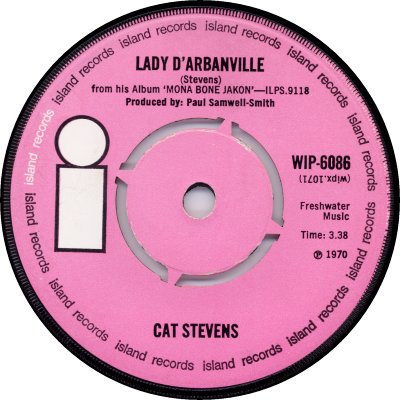

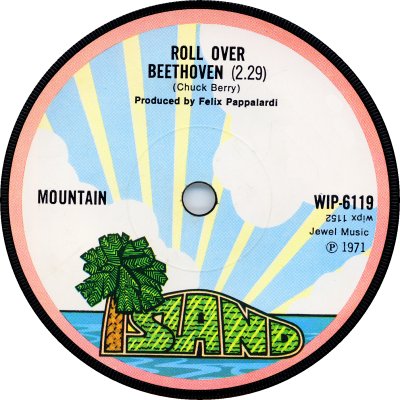

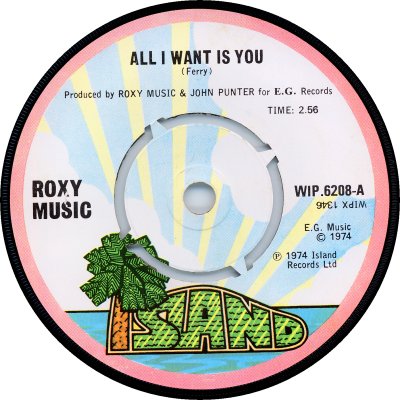
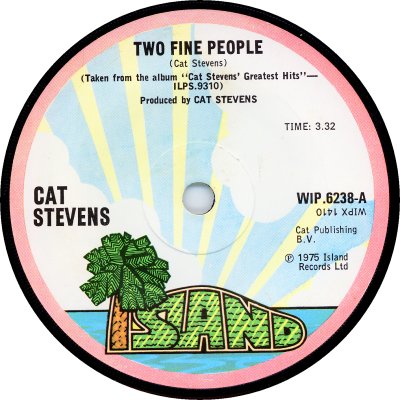
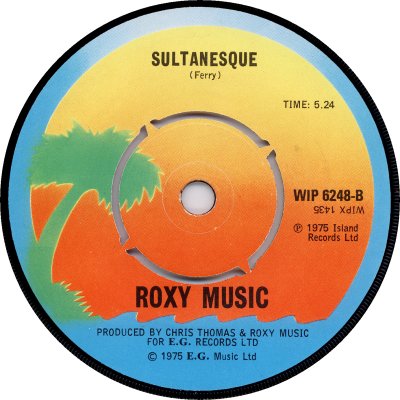



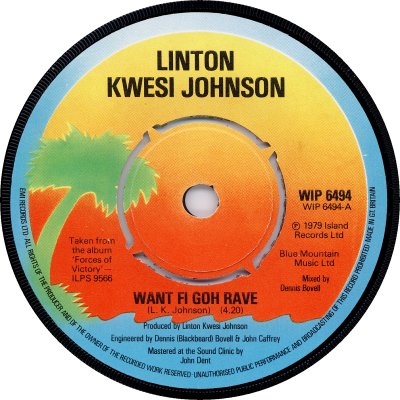
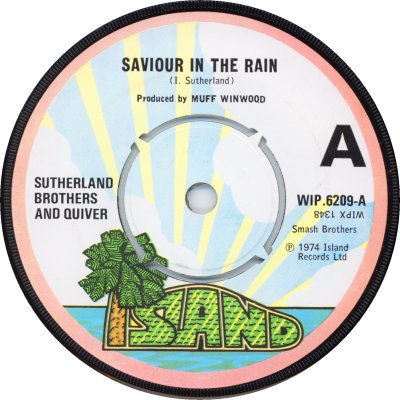
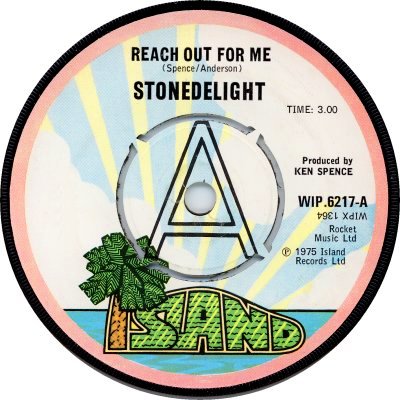
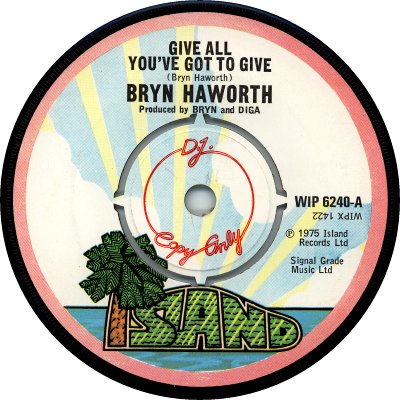

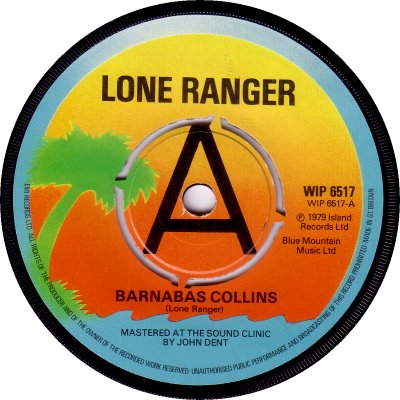
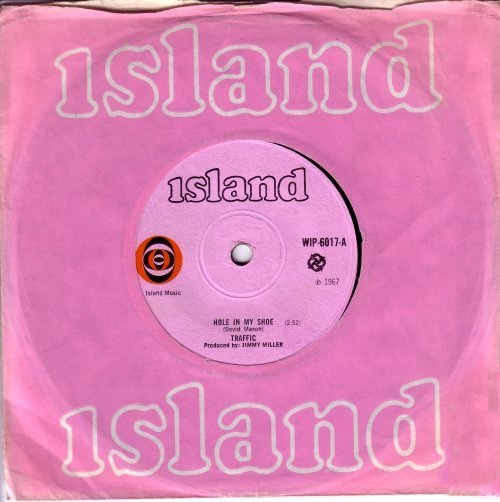
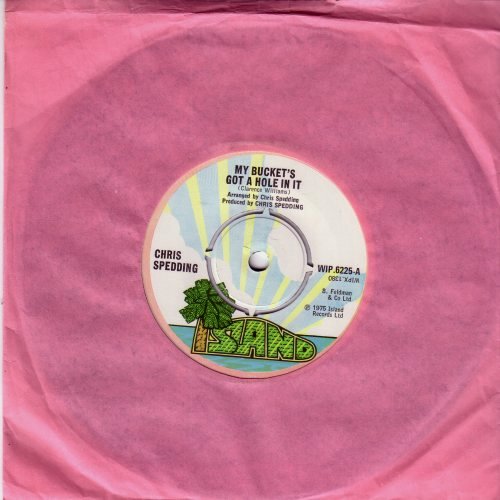
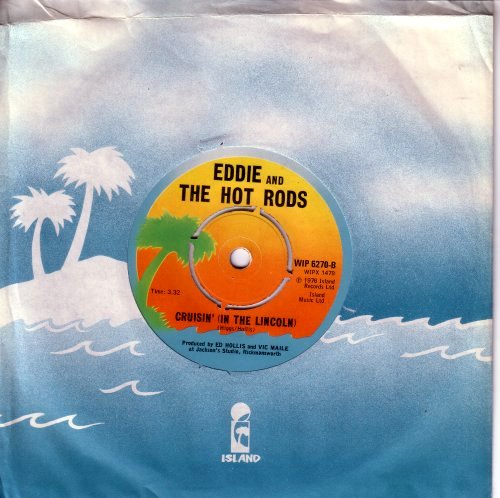
Island Records was founded in Jamaica, in 1959, by Chris Blackwell. To begin with it specialized in Ska; Blackwell relocated the label to London in 1962, hoping to find a ready market for his recordings among the expatriate West Indian community. Island flourished, and its scope widened. Blackwell signed the Spencer Davis Group and licensed their records to Fontana; their success inspired him to concentrate upon the Rock market rather than the Reggae one. The late '60s and early '70s saw some soon-to-be household names arriving at the label: Traffic, King Crimson, Jethro Tull and Free, among others. Producer Joe Boyd brought Folk-Rock to the label, with Fairport Convention and Fotheringay, while singer / songwriters Cat Stevens, John Martin and Nick Drake also found a home there. Roxy Music arrived as well, in 1972. 1973 saw a revival of the Reggae side of the company, with the signing of Bob Marley and the Wailers, who proceeded to sell albums by the zillion. Other Reggae artists signed up and enjoyed mainstream success: Toots and the Maytals, Aswad, Third World and Steel Pulse among them. Island began the 1980s by discovering U2; not a bad start, by anybody's reckoning. In 1989, however, Blackwell sold the company to A&M; it continues to this day, albeit as part of a large conglomerate rather than as an independent, and it is still flourishing.
References to Island in 'Music Week' include the introduction of stereo singles ('MW', 17th January 1970) with WIP-6075 and 6077 - at that time a lot of the singles released by the majors appear to have still been mono. Warner made a £6 million bid for Island that same year ('MW' 29th August) but after consideration Blackwell turned it down. Around that time Warner was looking for a new home for its labels, and there were serious proposals for it and Island to form a joint sales / warehousing / distribution company, but in the event they were abandoned ('Billboard', 30th January 1971). Chris Blackwell resigned as managing director in April 1971, in order to concentrate on production, the fostering of new talent, and the development of Island in the USA; he was replaced by David Betteridge ('MW', 24th April). November 1971 saw Island's music publishing division introduce a 'pop' label, Blue Mountain, for records that were "not in Island's image" ('MW', 23rd October 1971). The new label changed its function just under a year later; when Island terminated its partnership in Trojan with B&C in October 1972 it shifted its Reggae product to Blue Mountain ('MW', 21st October). Island began taking other independents under its wing: 'MW' of the 10th of March 1973 reported that in addition to the company's own material Island sales reps were handling records on the Bronze, Chrysalis, Rocket, Dragon and Manticore labels at that point. Although the Manticore connection proved short-lived, Bronze and Chrysalis were still with Island in September 1976 ('MW' 25th September). In 1974 'Island USA', a label dedicated to Soul music sourced from the States, was introduced; it proved less than successful and failed to last for twelve months. David Betteridge resigned in September 1977, after spending fifteen years with the company ('MW' 10th September). A big change came in December 1977, when Island signed a three-year licensing deal with EMI; it had operated as an independent since the end of its agreement with Philips in 1970. The new deal took effect from the 1st of January 1978 ('MW', 17th December 1977).
Island used four different label designs during the '60s. It started out with a red logo on a plain white label (1), during which period its singles were numbered in the WI-000s. With WI-101 this design was soon ditched in favour of a horizontal-red-eggtimer one (2); after WI-299 the catalogue numbers gained an additional 3, becoming WI-3000 (3). Singles on the company's Sue subsidiary used a similar label to this second design, with the white replaced by yellow, but as it didn't issue any records in the '70s it is outside the scope of this site. January 1967 saw the introduction of a pink 'popular' label (which had a rather psychedelic 'eye' logo) and a new numerical series, WIP-6000 (4, 5). For a time the 'eggtimer' and the 'eye' labels ran in tandem, but the old label expired in 1968 - it was given occasional revivals in later decades, having become something of an icon. In June 1969 the orange-and-black 'eye' turned black, got larger and moved to the centre; the name also changed and moved (6). This design proved short-lived, however - in its new position the 'eye' disappeared when large central holes were 'dinked', which can't have helped. In January 1970 the 'eye' was dropped and a white 'i' appeared, the label name migrating to the circumference (7). A thorough revamp took place in October 1970, with the label name being cleverly worked into a picture of an island (11). This design served until October 1975, when the Island name disappeared from the design completely; the island itself was replaced by a palm tree and some waves (15). From early in 1978 a perimeter text including a reference to EMI records was added at the bottom of the labels (19) - that kind of text was more or less standard elsewhere but for some reason Island's earlier records hadn't featured it. Demo copies do not appear to have been commonly given special markings until April 1973 when a medium-sized black 'A' was added to their labels (20); the occasional demo from the previous year had also been given that 'A'. For the first two months of 1975 the 'A' grew in size, hollowed out and moved to the centre of the label (21), but from March of that year it was replaced by the words 'D.J. Copy Only' in red, linked together (22). That look lasted only until September, at which point the colour of the wording turned black, the font style changed and the link disappeared (23). The new style proved more durable, only giving way to a large solid central 'A' in June 1979 (24).
To turn to the matter of manufacture, the job was shared by Philips / Phonodisc and Orlake during the late '60s and until August 1970. The pressings can be told apart visually: Philips / Phonodisc products generally have either three dinking perforations (4, 7), factory-dinked centres (5, 8) or solid centres with the type of raised area around the spindle hole that can be seen on the fourth scan above (though that scan has perforations). Orlake pressings can have solid centres with rough surfaces (10) or smooth surfaces without the raised area (6); or they can have four perforations and either rough (3) or smooth surfaces (9). If in doubt look for the matrix number in the run-off - if it's at six o'clock and its components are separated by plus signs, it's an Orlake; if it's at twelve o'clock and there are no plus signs, it's a Phonodisc.
'Music Week' of the 8th of August reported that Island's pressing and distribution deal had ended and that the company was looking at a proposed deal with EMI, with the possibility of Lugton, H.R. Taylor and Keith Prowse handling the company's less commercial West Indian material. Island duly moved to EMI, and singles began to have four narrow dinking perforations in the EMI style (12, 15, 19-24). EMI handled the manufacture of the vast majority of Island singles for the rest of the decade, but a few were pressed by Linguaphone - they have steep bevels and a 25mm raised area around the spindle hole (14, 18). In addition, custom pressings of popular singles were done by other companies, resulting in wider perforations or no perforations at all. The thirteenth scan is of a Decca pressing, with wide perforations and a prominent 'polo mint' around the spindle hole, and it can be compared with the EMI pressing (12). The sixteenth and seventeenth scans are of CBS pressings: the 'bullseye' markings which can just be made out around the spindle hole on the former and the 'canal' depression some way out from the spindle hole on the latter are typical of that company - compare the fifteenth to the fourteenth, which is an EMI pressing of the same single. Island had its own pressing plant / distribution centre, at West Drayton, from the summer of 1975 into early 1978, but it seems to have concentrated on manufacturing albums - 'MW' of the 21st of July 1975 quotes a spokesman as saying that pressing "will probably extend to singles from next year", but the plant was sold to WEA at the end of 1977 so the window of opportunity for Island-pressed singles to appear was small. 'MW' of the 27th July 1974 said that Multiple Sound Pressings were also responsible for manufacturing some Island product at that time, alongside EMI.
As far as distribution is concerned, Island's agreement with Philips / Phonogram covered it at the start of the decade, but the company seems to have done some of its own distribution as well. EMI took over distribution in the autumn of 1970, though again Island appears to have shared that task; 'MW' of the 10th of February 1973 said that the company had opened a 'new' distribution centre, at Brentford, which seems to imply that there had been a previous one. According to the article, distribution was to be shared with EMI: Island would service 500 main customers, with EMI covering the rest. As has been stated above, a new distribution centre / pressing plant opened at West Drayton in 1975, but the following year 'MW' of the 25th of September broke the news that Island was to cease distributing records; EMI was going to do the job on its own. When Island was licensed to EMI, in December 1977, the pressing and distribution arrangements continued. There were quite a number of Island-related labels in the '70s, including Island USA, Blue Mountain, Chrysalis, Jet, Bronze, Rocket, Manticore, Dragon, Movers, Rockers, Maple Annie, Blue Thumb, Black Swan, Beggars Banquet, Stiff, Shelter, Pacific Arts, Ze, Klik and Bearsville (q.v. all). I have put together one of my gap-ridden discographies for Island; as usual it only covers the 1970s. Thanks to John Timmis for the second scan.



Copyright 2006 Robert Lyons.

